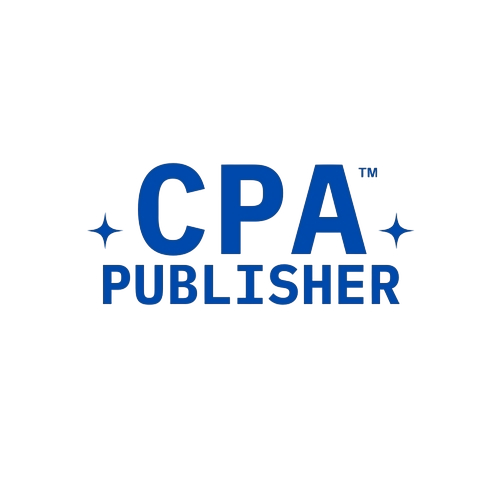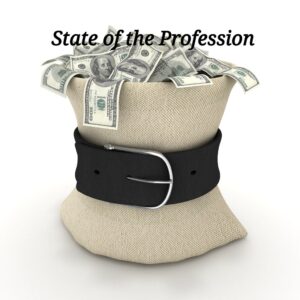Introduction
Two decades ago, the Public Company Accounting Oversight Board (PCAOB) was conceived and established to address various high-priority concerns.[1] It was designed to “fit” the economic and governmental structures that existed at that time. It came into existence in the aftermath of the 2001–2002 scandals, dominated by the Enron and WorldCom sagas. Congress created this public regulatory body against the “strong armed lobbying efforts of the auditing profession.”[2] The PCAOB became the watchdog, within the Securities and Exchange Commission (SEC), over the auditing profession.
In 2004, during its initial development, the Standing Advisory Board of the PCAOB recommended two consequential changes to correct the failures that resulted in investors losing confidence in independent auditors: the independent auditor had to (1) assume responsibility for detecting fraud” and (2) report “conflicts impacting the independence of the auditor arising from non-audit-related services.” [3]
Unfortunately, due to successful lobbying efforts by the accounting profession, the detection of fraud was an obligation that auditors no longer had, and it was dropped from their tool basket of generally accepted auditing standards. In addition, the market had changed significantly. There was explosive growth of more profitable non-audit services within the accounting profession, and auditing became the poor stepchild to the consulting and tax divisions, which were producing two-thirds of revenue at the largest firms even before the PCAOB was established.[4] The aggregate effects of these changes may lead today’s investor to ask what purpose the PCAOB is serving.
Performance of the PCAOB
For the past two decades, the PCAOB has spent $250 million to $400 million each year on inspecting the workpapers of public accounting firms who audit public companies, with the stated objective of increasing audit quality. However, the companies whose audit workpapers are reviewed by the PCAOB are not allowed to see their findings. In fact, none of the stakeholders of the company—investors, creditors, shareholders, employees—are allowed to see the PCAOB’s findings. The consequence is that critical audit deficiencies have remained unacceptably high over the past two decades and have not diminished at all.
In their 2022 inspections report, the PCAOB stated that audit deficiencies were at their highest level on record. There were deficiencies in 40% of all audit engagements inspected in that year (PCAOB, “Spotlight: Staff Update and Preview of 2022 Inspection Observations,” July 2023, Part 1.A, https://tinyurl.com/4968ztzw).
Twelve years earlier, in 2010, the PCAOB reported that “one out of three audits reviewed [33%] were defective. The next tier firms performed even worse” (Floyd Norris, “Bad Grades are Rising for Auditors,” New York Times, August 3, 2012).
Have taxpayers wasted over $4 billion over the past two decades with zero improvement in audit quality? And regarding fraudulent financial reporting: the PCAOB claims that their audits are based on an assessment of corporate risk. The investing public, then, is left wondering: how did they fail to uncover the greatest financial frauds in global history over the past two decades? How did they miss the excessive risk taken by Lehman and dozens of other companies that went bankrupt, seized the capital markets, and ultimately led to the Great Recession? These are not victimless crimes. I would argue that this reflects a complete level of incompetency in regulatory oversight by the PCAOB.
Financial Fraud and The Failure of the PCAOB
Over the past two decades, dozens and dozens of companies restated their earnings due to fraud (restatements are indicators of fraud[5]), while others just went bankrupt even though they published unqualified audit opinions. Not one of these corporate frauds was uncovered by PCAOB inspectors, who were charged with auditing companies based on their assessment of risk.
The list is significantly longer, but the reader may recall several recent frauds and misdeeds, including TD Bank, Theranos, Wells Fargo, GE, Silicon Valley Bank, Signature Bank, Wirecard, FTX, Luckin Coffee, Toshiba, Colonial Bank, Volkswagen, and Capitol One. Where was the PCAOB? In their 20 years of existence, could they have identified at least one of these companies whose audit workpapers were clearly fraudulent, deceptive, or seriously misleading?
Clearly, in the evolution of auditing, the wisdom of the Father of American Auditing was ignored. It was Montgomery who, in 1906, argued that the historic obligation and “principal obligation of the auditor” is to “detect, deter and uncover fraud.”[6] If there is no consequence to performing substandard work and no benefit from PCAOB oversight, what is the value of this incompetent agency?
Internal Fraud at the PCAOB
Finally, the PCAOB is not without its own internal fraud. PCAOB employees secretly told senior partners at one of the largest accounting firms the names of the companies they were going to inspect. PCAOB hires also come from employees at the Big Four accounting firms. In this most recent fraud, to my knowledge, no senior executive at the PCAOB was terminated, although the number two person at one of the Big Four was fired.
Conclusion
Let’s eliminate the $300–400 million a year from the federal government budget and create an effective oversight program, like the programs of supervised self-regulation that exist in the UK and ROW. Supervised self-regulation costs pennies on each dollar in the inflated PCAOB budget, and should result in more effective oversight and a focus on reducing corporate fraud. Today, 87% of the value of a company lies in its intangibles—research and development, business methods, patents, trademarks, business processes, copyrights, AI, and others—which are expensed by companies and not on the balance sheet.
Dr. Kraten observes, “The economic and governmental structures that existed at the time of the PCAOB’s inception bear little resemblance to those that exist today. Our contemporary global economy, and our societies, have radically new features and thus require radically new oversight systems and practices to regulate them.”[7]
COSO, the Committee of Sponsoring Organizations, formed in the 1980s, already exists as a governing oversight body and could be tasked to review audit quality. The Committee is composed of five professional organizations: the American Institute of Certified Public Accountants, the Institute of Internal Auditors, the Financial Executives Institute, the American Accounting Association, and the Institute of Management Accountants. To this oversight body, I would add members of the CFA, the Institute of Financial Analysts, who represent the interests of investors. Additional approaches also need to be considered.
The market cap to book value of the top tech companies ranges between 70 to 1 and 100 to 1, which means that non-financial measures are needed to assess the quality and excellence of these firms. Dr. Michael Kraten of Yale University suggests a different pathway to explore. Non-CPA consulting firms who consult on ESG daily would be invited to bid on a significantly different type of audit. As is the case in the EU and UK, the audit would also focus on measuring reputational capital, manufactured capital, human capital, financial capital, and others. In addition, firms would be hired based on the quality of their product, versus the current competition based on price. A recent Pew Research study reported the over 3/4 of Americans have little or no trust in our public companies. What a great way for this profession to help instill trust in our public institutions, in service to society and the common good.
[1] Author is very grateful to Dr. Michael Kraten for his input, feedback, and suggestions for this article.
[2] John C. Coffee, Jr., Gatekeepers: The Professions and Corporate Governance, Clarendon Lectures in Management Studies (Oxford University Press, 2019).
[3] Ibid., 143–145.
[4] Report of the Panel on Audit Effectiveness, as reported in Gatekeepers, 147.
[5] Coffee, Gatekeepers, and discussions with this author.
[6] Robert H. Montgomery, Auditing (1906), 4–6.
[7] Dr. Michael Kraten, direct quote, February 3, 2025.


